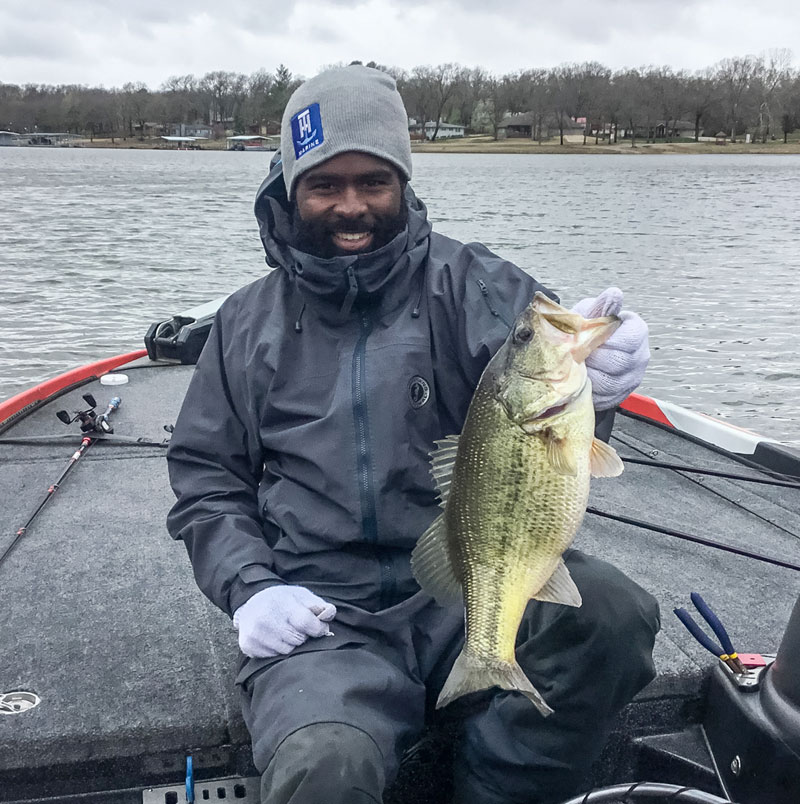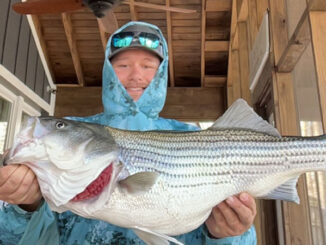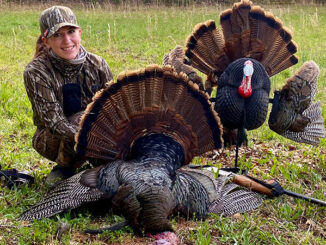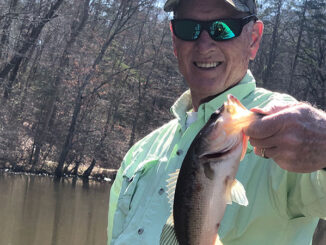
Brian Latimer says finesse ‘em up
When it comes to winter bass fishing on Lake Russell, Major League Fishing pro angler Brian Latimer said it’s all about finesse fishing the depths.
Latimer said diving birds will offer clues about where to begin fishing here this month, but they don’t tell the whole story. On many lakes, diving birds will tell anglers to throw topwater lures to the fish that are pushing baitfish to the surface. But that’s not the best strategy here.
“The fish push the bait to the surface, then the birds come down and eat the bait. That’s one way to find the fish this time of year when it’s real cold. It’s a good sign,” said Latimer.
After motoring to the diving birds, Latimer studies his electronics, looking for either fish, baitfish, or structure.
“As long as the water temperature is above the 40s, you can still find fish on your electronics. But once it’s in the 40s, the fish will stay right on the bottom and you won’t see them. That’s when you just look for structure,” he said.
Latimer likes to fish anywhere from 30 to 50 feet deep. He keeps it simple when it comes to lures. The fish school up in groups, so finding them is key.
“You really have to find them because right now, they school up in bigger groups. That’s great once you find them, but you’ve got to take the time to find them,” he said.
Lures for winter bass
He sticks with three primary lures.
“I use the Ned Rig and fish it vertically, a dropshot with a 3/16-ounce weight, and a jigging spoon,” he said.
He uses Z-Man soft plastics, mainly a minnow-style body and a dropshot worm. He fishes these with a spinning reel mounted to a Favorite Rods BLat Sick Stick.
“When they’re chasing shad, a StreakZ 3.75 on a 1/5-ounce Ned-style jighead is a great choice,” he said.
He drops his lures down, fishing vertically.
“The biggest thing is spending time behind the wheel, looking for food. Anywhere there’s bait, they’ll usually be birds. And anywhere there’s birds, there’s usually some fish. It’s only like that on Lake Russell during winter,” he said.
Once he’s located some bait, he drops his lure straight down to the structure, then simply shakes his rod slightly. This creates a very subtle movement of his lure. With his electronics, he can see his lure and watch the fish react to it. He sometimes actually sees the bite on his screen before he feels the fish.
“Fishing deep with the right electronics is a lot like topwater fishing because you have that visual stimulation. You can see the fish react to your bait,” he said. “And this time of year, with shorter days, these fish are feeding all day long.”
Latimer catches some largemouth, some spotted bass and some stripers when fishing this way. When it comes to depth, he finds the deeper he fishes, the more fish he’ll catch. But those deeper fish are smaller.
“Between 35 to 40 feet, that’s where I catch the bigger fish. In 50 to 60 feet, it’s a numbers game, but smaller fish.”





Be the first to comment